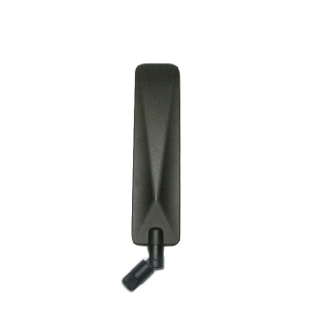sector antenna vs directional antenna

Fan shaped antenna and directional antenna are two different types of antennas commonly used in wireless communication systems, each with unique characteristics and application scenarios. The following is a detailed analysis of these two types of antennas, aimed at providing practical and in-depth information for professionals or enthusiasts in the field of wireless communication.
Sector Antenna
A fan-shaped antenna, as the name suggests, is an antenna with a fan-shaped radiation pattern. It is usually designed to cover a specific angle range, and signals outside this angle will significantly attenuate. A fan-shaped antenna can be unidirectional or bidirectional, depending on the design requirements.
Features:
1. Radiation angle limitation: The design of a fan-shaped antenna has a primary radiation angle, usually 90 degrees, 120 degrees, or wider.
2. Directionality: Although not as highly directional as traditional directional antennas, sector antennas can still provide better directional performance than omnidirectional antennas.
3. Signal coverage: Suitable for providing uniform signal coverage within specific fan-shaped areas, commonly used in urban blocks, commercial areas, etc.
Application scenario:
-Wireless network coverage, such as Wi Fi hotspots
-Mobile communication base stations, especially in urban environments
-Public safety communication system
Advantages:
-Can concentrate signal coverage in specific areas, reducing signal waste.
-It can effectively control interference and improve spectrum utilization.
Disadvantages:
-Accurate adjustments are required to ensure the correct coverage range.
-For mobile users, if they move out of the fan-shaped coverage area, they may experience a decrease in signal quality.
Directional Antenna
Directional antenna, also known as high gain antenna, is an antenna designed to transmit or receive signals in a specific direction. This type of antenna can maintain high signal strength over long distances while suppressing signals from other directions.
Features:
1. High directionality: Directional antennas have strong directionality and can concentrate signals in a narrow beam.
2. High gain: Compared to omnidirectional antennas, directional antennas typically have higher gain and can transmit over longer distances.
3. Narrow beam width: The beam width is relatively narrow, suitable for point-to-point communication connections.
Application scenario:
-Long distance wireless links, such as satellite communication and radio relay.
-High speed network connection, such as establishing stable wireless bridges between buildings.
-Accurate target localization and tracking.
Advantages:
-Capable of providing high-performance communication links over long distances.
-By reducing unnecessary signal propagation directions, interference can be minimized.
Disadvantages:
-Accurate alignment is required to ensure optimal performance.
-For mobile users or sensitive to environmental changes, regular adjustments may be necessary.
Selection in practical applications
When choosing between a sector antenna or a directional antenna, the following factors need to be considered:
1. Coverage area: If you need to cover a wide area, a fan-shaped antenna may be a better choice. If it is necessary to transmit signals in a specific direction, directional antennas are more suitable.
2. Distance: For long-distance transmission, directional antennas are usually superior due to their high gain characteristics.
3. Installation location: The fan-shaped antenna is suitable for installation in locations that need to cover specific angle areas, while the directional antenna needs to be installed in a location that can accurately align with the target receiving point.
4. Interference control: In high interference environments, directional antennas can reduce interference by their directional height.
5. Cost and Maintenance: Directional antennas may require more professional installation and maintenance, while fan-shaped antennas are relatively easy to deploy.
Fan-shaped antennas and directional antennas each have their own advantages, and their selection should be based on specific application requirements, budget constraints, and on-site conditions. In actual wireless communication system design, the most suitable antenna type is usually selected based on comprehensive considerations such as coverage range, transmission distance, interference control, and cost-effectiveness.





